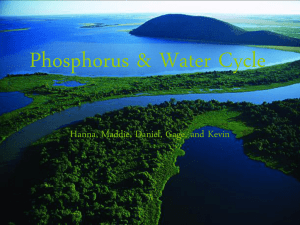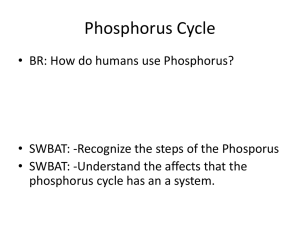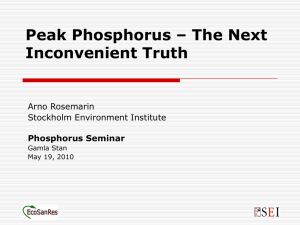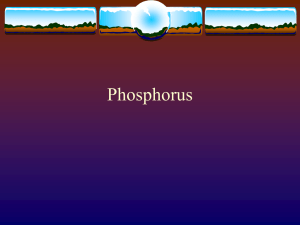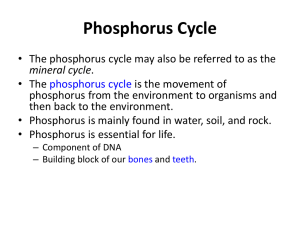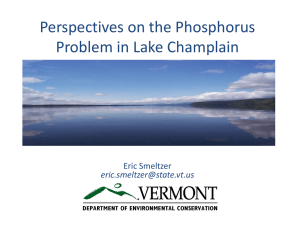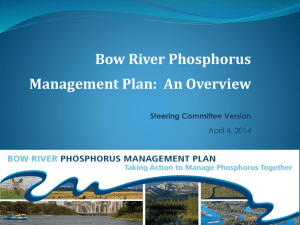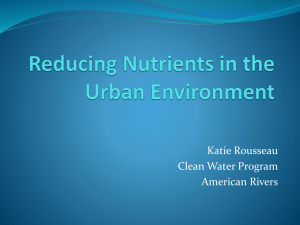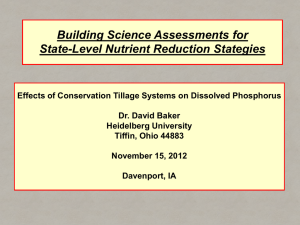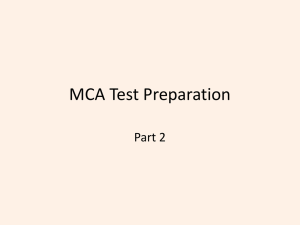Phosphorus-Cycle
advertisement
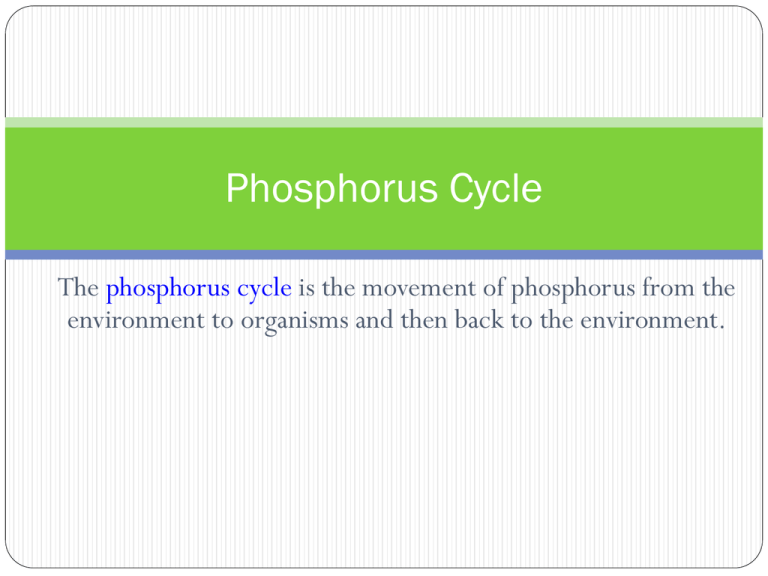
Phosphorus Cycle The phosphorus cycle is the movement of phosphorus from the environment to organisms and then back to the environment. Phosphorus Mineral cycle Unlike the other cycles, phosphorus cannot be found in air in the gaseous state. Phosphorus is mainly found in water, soil, and rock. Importance of Phosphorus Organisms need phosphorus for biological processes. It is a major component of DNA/RNA/ATP (important for energy transfer) as well as phospholipids that form all cell membranes. Phosphorus Cycle The phosphorus cycle is the SLOWEST cycle. Phosphorus is most commonly found in rock formations and ocean sediments as phosphate salts. Phosphate salts that are released from rocks through weathering usually dissolve in soil water and will be absorbed by plants. PHOSPHORUS CYCLE The phosphorus cycle occurs when phosphorus moves from land to sediments in the seas and then back to land again. The main storage for phosphorus is in the earths crust. On land phosphorus is usually found in the form of phosphates By: Jermaine Loutin (Jose Marti Six Form Envi.) Phosphorus Phosphorus is a vital nutrient necessary for plants and animals in the form of PO43- and HPO42-. Phosphorus is the building block of important parts of the body such as bones and teeth. About 80% of the world’s phosphorus is used in fertilizers and soft drinks. Phosphorus does not entre the atmosphere it stays in rocks and soil minerals. Phosphorus Unlike other cycles of matter compounds, phosphorus cannot be found in atmosphere as a gas. It usually cycles through water, soil, and sediments. Phosphorus Cycle Animals absorb phosphates by eating plants or plant- eating animals. When animals and plants die, phosphates will return to the soils or oceans again during decomposition. After that, phosphorus will end up in sediments or rock formations again, remaining there for millions of years. Eventually, phosphorus is released again through weathering and the cycle starts over. Phosphorus Cycle By: Jermaine Loutin (Jose Marti Six Form Envi.) Human Impacts on the Phosphorus Cycle Like nitrogen, increased use of fertilizers increases phosphorus runoff into our waterways and contributes to Eutrophication and Algal bloom. Human impacts on Cycle From the 1940’s trough 1900’s, phosphates used in laundry detergents caused leached phosphorus emitions into streams, rivers, and lakes. Fertilizers containing phosphorus lead to phosphates in water (excess) In comparison to nitrogen and carbon, the rate at which phosphate salts are released is extremely slow. Phosphorus can remain in rocks or sediments for millions of years. Another human cause of artificial eutrophication is run-off from mines. Mining in areas where rock is rich in phosphorus minerals can create dust that is blown by wind into nearby water systems. QUESTIONS What is the phosphorus cycle? How is the phosphorus cycle different from the other biogeochemical cycles? Name two importance of phosphorus to plants and/or animals. Name the main way in which phosphorus is released ‘naturally’ in the environment. Name two ways humans help to release phosphorus in the environment By: Jermaine Loutin (Jose Marti Six Form Envi.)

